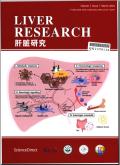Short-term prognosis of recipients with pretransplant exposure to immune checkpoint inhibitors after liver transplantation for hepatocellular carcinoma: A retrospective cohort study
IF 2.1
Q2 Medicine
引用次数: 0
Abstract
Background and aims
Despite growing evidence linking pretransplant exposure to immune checkpoint inhibitors (ICIs) to increased allograft rejection risk after liver transplantation (LT), a lack of comparative studies to definitively establish the correlation between ICI exposure and adverse short-term outcomes after LT exists. This study aimed to analyze the impact of preoperative ICI exposure on short-term post-LT prognosis and allograft rejection risk.
Methods
This retrospective cohort study included 121 recipients who underwent LT for hepatocellular carcinoma (HCC) between June 2019 and March 2023. The recipients were categorized into ICI (n = 35) and non-ICI (n = 86) exposure groups based on pretransplant ICI exposure. Demographics, clinical characteristics, and short-term outcomes were compared between the cohorts. Kaplan-Meier analysis evaluated the impact of ICI exposure on graft survival. Univariate and multivariate logistic regression models assessed the impact of patient characteristics on allograft rejection.
Results
Recipients with or without ICI exposure exhibited comparable demographic baseline characteristics. The incidences of early allograft dysfunction and biliary and vascular complications were similar between both groups. Post-transplant infection incidence was 37.1% and 20.9% in the ICI and non-ICI groups, respectively (P = 0.064). Allograft rejection rates were significantly higher in the ICI group than in the non-ICI group (22.9% vs. 5.8%, P = 0.015). The ICI group exhibited a higher 90-day post-transplant mortality rate than that of the non-ICI group (14.3% vs. 2.3%, P = 0.034). Logistic regression analyses demonstrated that allograft rejection independently correlated with 90-day post-transplant mortality, with ICI exposure being an independent risk factor for allograft rejection. In recipients with ICI exposure, a shorter interval between ICIs and LT (washout period) was significantly associated with a higher allograft rejection risk, with the optimal washout period identified as 21 days for predicting 90-day rejection-free survival (P = 0.0001). Moreover, in recipients with allograft rejection, the peripheral CD4+/CD8+ T cell ratio was much lower in the ICI group than in the non-ICI group.
Conclusions
Pretransplant ICI exposure was an independent risk factor for allograft rejection and was significantly associated with 90-day post-transplant mortality after LT for HCC. A ≤21-day washout period was significantly associated with allograft rejection. Future multicenter studies with larger cohorts and prospective designs are essential to validate these findings, confirm causality, and establish standardized clinical guidelines for ICI use before transplantation.
Trail registration
ClinicalTrials.gov NCT05913583.
肝细胞癌肝移植后接受移植前免疫检查点抑制剂治疗的短期预后:一项回顾性队列研究
背景和目的尽管越来越多的证据表明移植前暴露于免疫检查点抑制剂(ICIs)与肝移植(LT)后同种异体移植排斥风险增加有关,但缺乏明确建立ICI暴露与肝移植后不良短期结局之间相关性的比较研究。本研究旨在分析术前ICI暴露对肝移植术后短期预后和同种异体移植排斥风险的影响。方法:本回顾性队列研究纳入了121例2019年6月至2023年3月期间因肝细胞癌(HCC)接受肝移植的患者。根据移植前的ICI暴露情况将受者分为ICI暴露组(n = 35)和非ICI暴露组(n = 86)。比较两组患者的人口统计学、临床特征和短期结果。Kaplan-Meier分析评估了ICI暴露对移植物存活的影响。单变量和多变量logistic回归模型评估了患者特征对同种异体移植排斥反应的影响。结果有或没有ICI暴露的受者表现出可比较的人口统计学基线特征。两组患者的早期异体移植物功能障碍及胆道和血管并发症发生率相似。移植后感染发生率分别为37.1%和20.9% (P = 0.064)。同种异体移植排斥反应在ICI组明显高于非ICI组(22.9%比5.8%,P = 0.015)。移植后90天,ICI组的死亡率高于非ICI组(14.3%比2.3%,P = 0.034)。Logistic回归分析表明,同种异体移植排斥与移植后90天死亡率独立相关,ICI暴露是同种异体移植排斥的独立危险因素。在ICI暴露的受者中,较短的ICI和LT间隔(洗脱期)与较高的同种异体移植排斥风险显著相关,最佳洗脱期为21天,可预测90天无排斥生存(P = 0.0001)。此外,在同种异体移植排斥反应的受者中,ICI组的外周血CD4+/CD8+ T细胞比例远低于非ICI组。结论再移植ICI暴露是异体移植排斥反应的独立危险因素,与肝细胞癌肝移植术后90天死亡率显著相关。≤21天的洗脱期与同种异体移植排斥反应显著相关。未来有更大队列和前瞻性设计的多中心研究对于验证这些发现、确认因果关系和建立移植前使用ICI的标准化临床指南至关重要。临床试验注册:clinicaltrials .gov NCT05913583。
本文章由计算机程序翻译,如有差异,请以英文原文为准。
求助全文
约1分钟内获得全文
求助全文

 求助内容:
求助内容: 应助结果提醒方式:
应助结果提醒方式:


